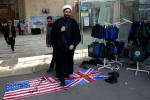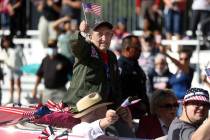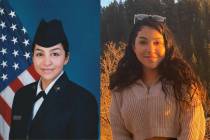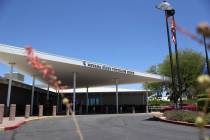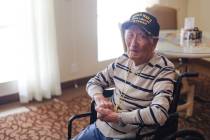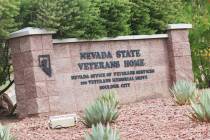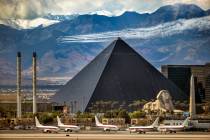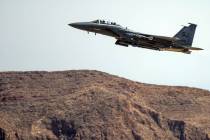‘Just another day at the office’
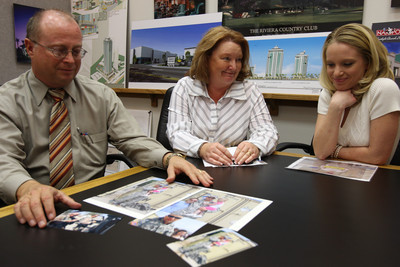
A little more than a week ago, Rob Congdon was ducking bullets fired by a sniper while he and other medics tried to rescue five soldiers wounded in a roadside bomb attack on a Stryker armored vehicle.
“It was just a single shooter,” Congdon, a Bonanza High School graduate, former local lifeguard and paramedic, said about the Jan. 18 encounter about 20 miles north of Baghdad, near the Tigris River.
“He fired three rounds and we went inside the Stryker,” he said Thursday by telephone from Camp Taji, Iraq. “We raised the ramp so he wouldn’t have any clear angle.
“When we lowered it to get out, he started shooting again. The first one we heard hit the Stryker went past my partner’s head. Two other ones hit about three feet to my right on the dirt,” Congdon, 34, said about the bullets whizzing through the air.
The staff sergeant was a key player in one of two medical evacuation teams that responded in Black Hawk helicopters from Company C, 2nd Battalion of the 3rd Infantry Division’s 3rd Aviation Regiment.
The rescue began when the Black Hawks landed in a depression surrounded by tall grass less than 100 yards from the bombed out Stryker.
It was close enough for Congdon and Staff Sgt. Aughe McQuown to sprint for their wounded comrades, but far enough away to avoid detonating any other improvised explosive devices that might be near the road.
What followed was 35 minutes of close calls and hard work by the team that would save the lives of all five of the wounded soldiers from the 25th Infantry Division.
“The first three we put on (stretchers) and used infantrymen to help us get them back,” Congdon said.
But when they returned for the last two, the sniper opened fire.
Congdon, who had started to evacuate the fourth soldier, realized they needed to quickly return to the safety of the disabled vehicle.
“I just grabbed the patient and grabbed McQuown and we went into the Stryker,” he said.
According to the company’s operations chief, Capt. Samuel Fricks, Congdon alertly reset the Stryker’s radio frequency so he could communicate inside with the helicopters.
“I called back to my pilot and told him what the situation was,” Congdon said. “I couldn’t see anything, but they figured out the general area where he (the sniper) was.”
Fricks called in Apache helicopters that eventually circled the area intent on quelling the sniper fire with their 30mm cannons.
While that was going on, a medic in training, Sgt. Donald Dedmon, ran back and forth between the two parked Black Hawks treating the wounded soldiers that were already on board.
Meanwhile, Congdon and McQuown were eager to get back to the helicopter with the last two soldiers, fearing that because of their wounds time was of the essence.
Since no stretchers were available, they would have to carry them nearly the distance of a football field with the help of another soldier.
When they lowered the Stryker’s ramp to get out, the sniper started shooting; but they decided they weren’t turning back.
The medics slung the two wounded over their backs in what’s called a “fireman’s carry” position. The infantry soldier helped with the tallest patient.
“We kind of drug him,” Congdon recalled. “His feet were dangling as we ran.”
They managed to make it back to the Black Hawks safely.
“We got the last two patients in, closed the doors, and it took about 10 minutes to get to the hospital in Balad,” he said.
One of the wounded soldiers inside Congdon’s helicopter had a broken back, and the other had a partially amputated lower left leg, “but they were going to save it,” he said.
During the ordeal, Congdon said he had little time to think about anything but getting the soldiers and his crew out alive.
In the back of his mind, though, Congdon said he remembers thinking about his wife, Bonnie, and their 2-year-old daughter, Samantha, back in Georgia, and his mom and dad, Margaret and Gary Congdon in Las Vegas, and his “little sister,” Crystal Hill, and younger brother, Michael.
“I’m supposed to go on leave,” he said. “I was kind of hoping nothing was going to happen to me so I could go home in two weeks. … The hardest thing we have to do is be away from our families.”
Gary Congdon said when he heard about the rescue, he was relieved that his son was OK; but the thought of what had happened left him shaking his head.
“I talked with Rob today. I said, ‘Do you possibly think you could keep your head down a little bit better?’ He said, ‘Dad, I was OK.’
“It scares the heck out of us, but for him it’s just another day at the office. That’s the kind of guy he is,” Gary Congdon said Wednesday.
In Iraq on his second tour, Rob Congdon said a good portion of the medical evacuation calls are for Iraqi security personnel or “local citizens caught up in the crossfire.”
“Rarely do we transport Americans any more. It’s like a euphoric state when you’re able to work on another American and he lives,” he said.
Compared to his first tour with the 101st Airborne Division, it’s much better being a medic on a helicopter.
“It was a lot worse,” he said. “It’s a different angle of the same beast, but last year we were walking around getting shot at.”
From Congdon’s perspective, the U.S. military has come a long way in restoring security in Iraq compared to the first few years following the 2003 invasion.
“On Christmas Eve, we were flying back to our base using night vision goggles. We could see cars, people out shopping. It looked like the traffic around any one of the malls in Las Vegas. It looked like a normal town.
“You can’t fly anywhere in daylight now and not see a dozen soccer games. I saw someone jogging on the path by the river. So, yeah, I think we’re making progress.”
Contact reporter Keith Rogers at krogers @reviewjournal.com or (702) 383-0308.




